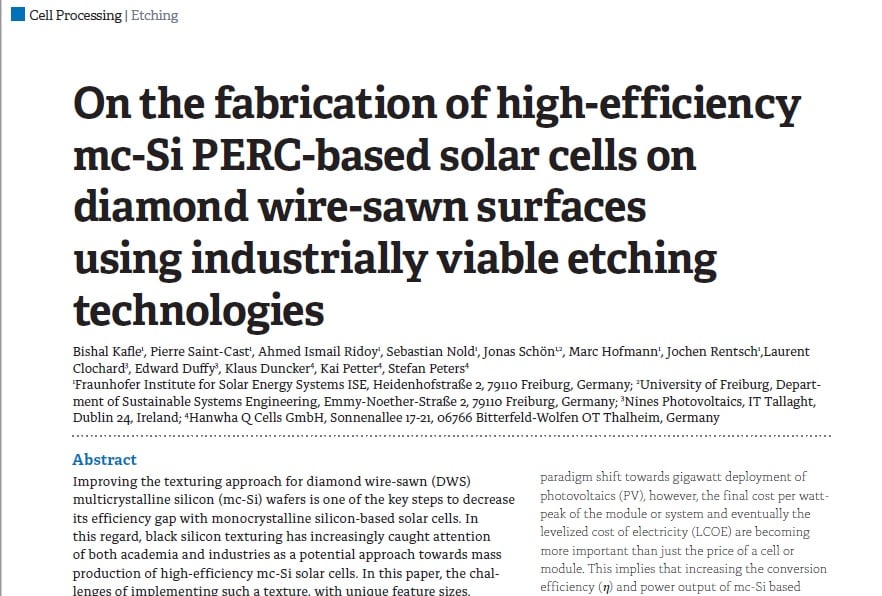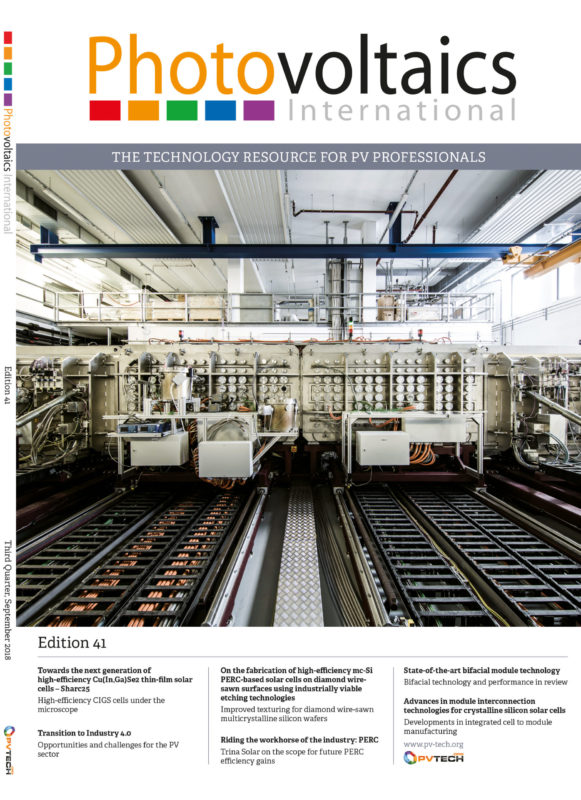By Bishal Kafle; Pierre Saint-Cast; Ahmed Ismail Ridoy; Sebastian Nold; Jonas Schön; Marc Hofmann; Jochen Rentsch; Laurent Clochard; Edward Duffy
Improving the texturing approach for diamond wire-sawn (DWS) multicrystalline silicon (mc-Si) wafers is one of the key steps to decrease its efficiency gap with monocrystalline silicon-based solar cells. In this regard, black silicon texturing has increasingly caught attention of both academia and industries as a potential approach towards mass production of high-efficiency mc-Si solar cells. In this paper, the challenges of implementing such a texture, with unique feature sizes, in mass production are discussed in detail, and the latest results are reviewed. Finally, results of the first trials at high volume manufacturer applying an alternative plasma-less dry-chemical etching (ADE) method are presented.



